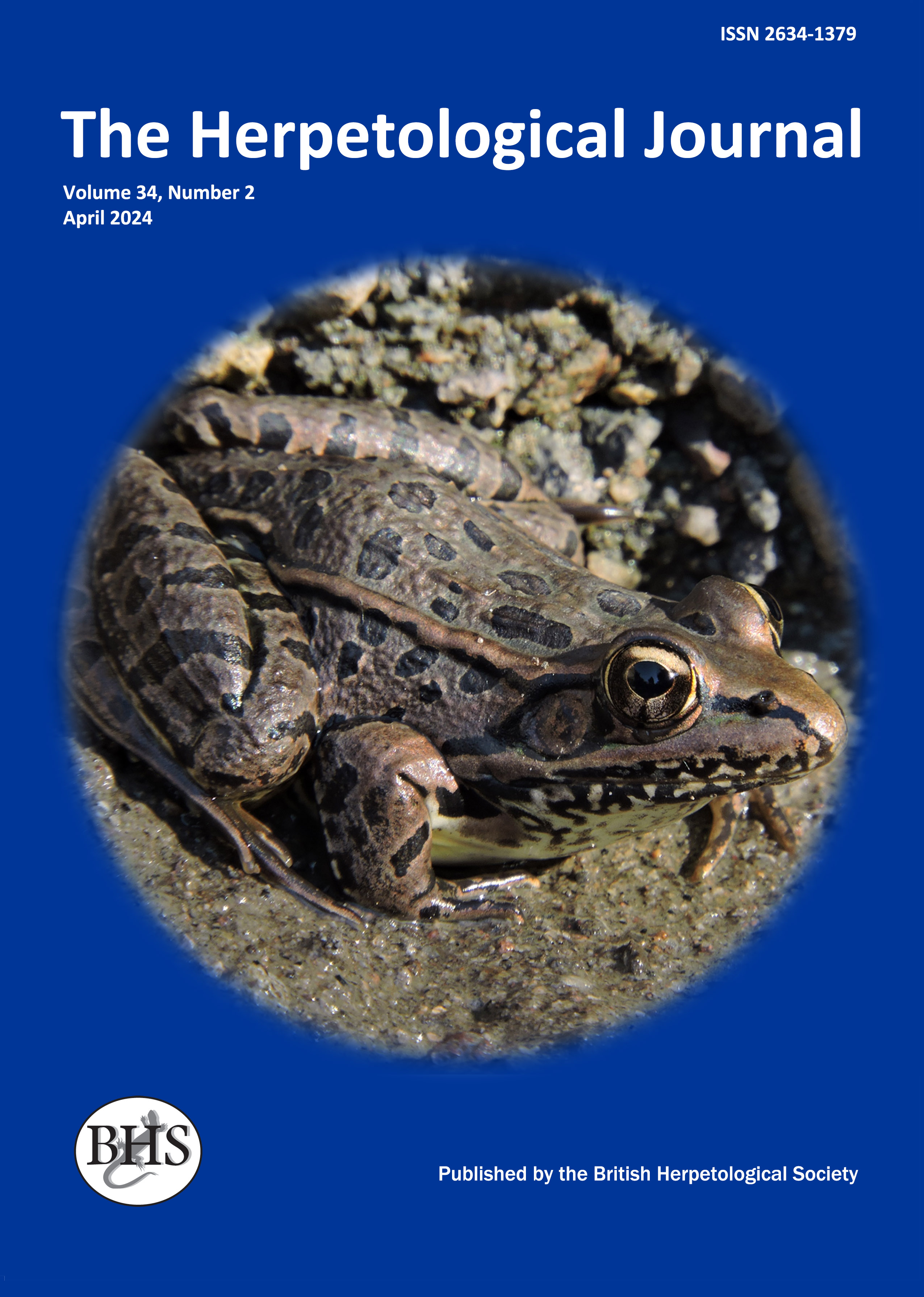
The Herpetological Journal
The Herpetological Journal is the Society's prestigious quarterly scientific journal. Articles are listed in Biological Abstracts, Current Awareness in Biological Sciences,Current Contents, Science Citation Index, and Zoological Record.
ISSN 0268-0130
2021 Impact Factor from Clarivate for the Herpetological Journal is 1.194, an increase of 0.332 from 2020.
pdf 05. Changes in community composition, habitats and abundance of snakes over 10+ years in a protected area in Italy: conservation implications
1168 downloads
Open Access
pp. 29-36
Authors: Filippi, Ernesto & Luiselli, Luca
Abstract: The snake fauna of different habitat types was studied in a protected Mediterranean area of central Italy ('Canale Monterano' in the Tolfa Mountains, province of Rome) during the period from August 2002 to September 2003. The collected data were compared to those collected at the same study area over 10 years before, and published by Luiselli & Rugiero (1990). We captured eight different species (seven colubrids and one viper), six of which were observed in the earlier study. During both surveys, the most common species was Coluber viridiflavus, followed by Vipera aspis. In the 2002-2003 survey there was a slight increase in the value of the species diversity index but a remarkable increase in the value of species dominance index (due especially to the proportional higher abundance of C. viridiflavus). We used multivariate statistics, Pianka and Czechanowski overlap indices and Monte Carlo simulations on the habitat use states during the two survey periods to document whether the various species modified their habitat preferences between surveys. In terms of habitat preferences, all these indicators showed that there were substantial interspecific differences but that the species-specific preferences remained the same over the two survey periods. There was a decrease in the abundance of Elaphe longissima and, to a lesser degree, V. aspis, caused especially by clearing brush at an archaeological site where these snakes were very common over 10 years ago. This is potentially relevant in conservation terms, as in places such as Europe, where many of the protected areas are set aside for archaeological or historical (as opposed to biological) reasons, management to maintain sites or improve access may be detrimental to native species. The various habitats differed in their conservation value for snakes. Appropriate management of the 'dry-stone walls and oak forests' habitat-mosaic appeared especially important for the conservation of this snake community, and the same may well be true for many other areas in Mediterranean central Italy.
Keywords: CENTRAL ITALY, MEDITERRANEAN PROTECTED AREAS, HABITAT SELECTION, SERPENTES, HISTORICAL CHANGES

